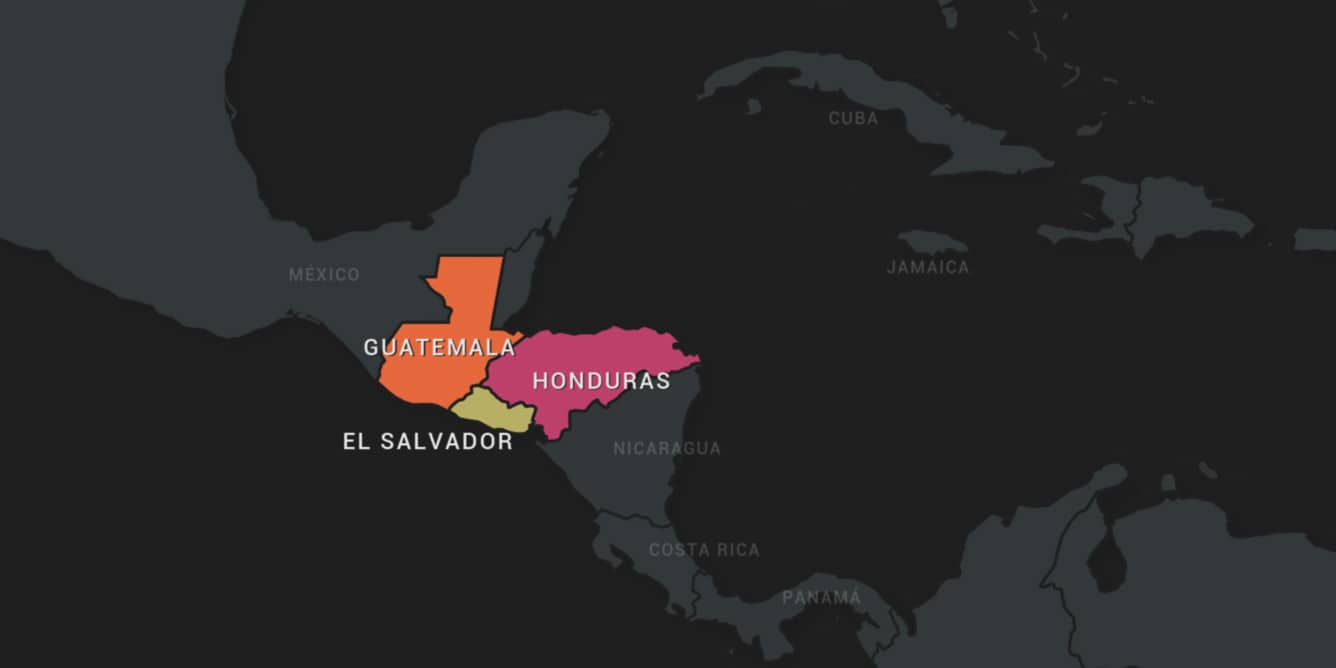The Northern Triangle countries of Guatemala, El Salvador and Honduras are now home to some of the most sophisticated extortion schemes in Latin America. The birth of these extortion markets is intertwined with the beginnings of the region’s two most dangerous gangs: the Mara Salvatrucha (MS13) and 18th Street Gang (Barrio 18).
Maras and Extortion: The Fuel for Expansion
The origins of these gangs can be traced back to the late 1970s, when El Salvador saw major outflows of migration into the United States as a result of the brutal civil war that rocked the country from 1980 to 1992. Immigrants mainly settled in poor districts of Los Angeles, where, threatened by existing gangs, they quickly formed what they called cliques, or clicas, to survive.
*This investigation into extortion in the Northern Triangle was carried out as part of a joint project with the Global Initiative.
The spread of both gangs in the Northern Triangle is widely attributed to the change in US immigration policies during the 1990s, as new laws allowed for the massive deportation of ex-convicts back to Central America. According to the Department of Homeland Security, out of 129,726 convicted criminals deported to Central America between 2001 and 2010, 90 percent were sent to the Northern Triangle countries.
Their native countries, however, were unprepared for the homecoming. Reintegration proved difficult as many deportees faced social stigma upon returning to Central America. Gang membership became particularly attractive to youths in poor neighborhoods, which had largely been abandoned by the state in the war’s aftermath.
‘Mano Dura’ and Mass Incarceration in the Northern Triangle Countries
The policies of Central American governments during the 2000s to combat gang presence only strengthened the gangs’ grip on society.
In an effort to confront the gangs and related criminality, “hard fist” or “mano dura” policies resulted in the mass incarceration of suspected gang members. New laws criminalized gang membership in all three countries.
Between 1999 and 2014, the number of incarcerated Hondurans grew by about 50 percent. Currently, the country’s prisons operate at 189 percent over capacity, with most inmates held in pre-trial detention. El Salvador’s prison population more than quadrupled from 7,700 in 2000 to around 37,000 in 2016. The number of gang members behind bars grew from 7,555 in 2009 to nearly 13,000 by 2015.
And in Guatemala, the number of people in prison more or less tripled between 2000 and 2014, from just under 7,000 to more than 21,000.
From behind prison walls, gang leaders across the region found that penitentiaries provided safe havens which they could manage their most important street-based operations.
Inside the prisons, disparate groups of “clicas” organized themselves and formed a national structure, first in El Salvador, then in Honduras and Guatemala.
This dynamic was primarily reinforced by two factors: the segregation of gangs into their own prisons or prison blocks separate from other inmates; and the lack of control within penitentiaries.
Mass incarceration did, however, impact the gangs’ criminal earnings. Faced with increasing legal actions against them, the gangs sought more funds to pay for lawyers and other costs associated with trials and jail time. The result was a concerted effort toward systematic extortion of small businesses and public transport as well as distribution services.
Prisons were now the gangs’ headquarters and extortion their main income stream.
*This investigation into extortion in the Northern Triangle was carried out as part of a joint project with the Global Initiative.

